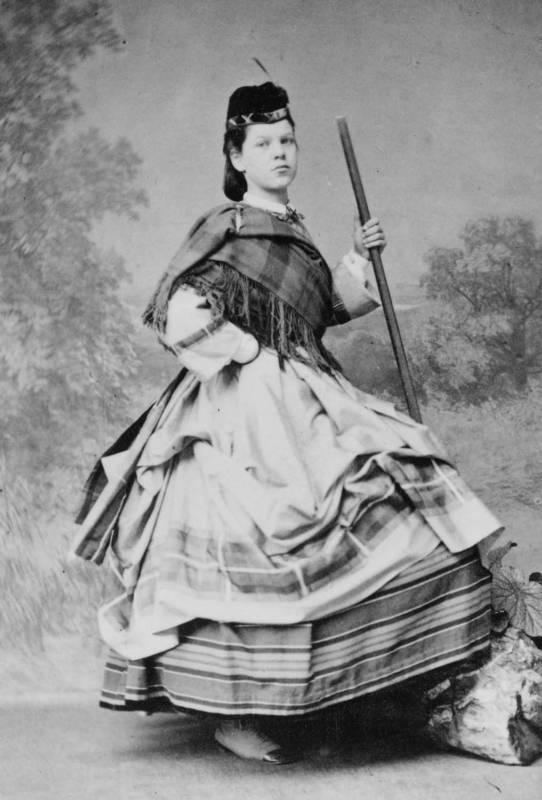
Who was Alice de Rothschild?
Alice Charlotte de Rothschild is an interesting, but relatively little known member of the great Jewish dynasty of financiers, collectors and philanthropists. In many respects a typical Rothschild, with her pan-European heritage and interests in collecting, landscape and gardens, she had a powerful and independent personality which left its mark on Waddesdon.
Join us this year as we celebrate the life, collections and legacy of Alice de Rothschild (1847-1922). Come and discover her key role in Waddesdon’s history with an exciting programme of exhibitions and displays, special tours, themed activities, and much more at Waddesdon
Find out more about “Alice’s Wonderlands”
Early life
Born in Frankfurt in 1847, the youngest child of Anselm and Charlotte von Rothschild (her father was the great-grandson of the founder of the family business) and then moving to Vienna, she might have expected that her life would follow a similar trajectory to other Rothschild girls, many of whom married male cousins from other branches of the family. But the early death of her beloved mother, when Alice was only 12, meant that much of her youth was spent shuttling between different relatives, an unsettled existence that produced a self-reliant, determined character. She never married and was particularly attached to her brother Ferdinand, coming to join him when he settled in England. They lived next door to each other on Piccadilly, and later, she came to live with him to Buckinghamshire where she witnessed the building and furnishing of Waddesdon Manor from 1874, which she was to inherit on his death in 1898.

Life at Waddesdon
Waddesdon was a house created both for entertaining the political and social elite, and as a setting for Ferdinand’s extraordinary collections, which like others in the family, focussed on 18th paintings and decorative arts, largely French. Alice was a collector in her own right, in similar areas to her brother, but also in distinctive ways. Her interests included pipes and match boxes, as well as 16th and 17th-century arms and armour, assembled to furnish the Bachelors’ Wing at Waddesdon, the part of the house used by male guests during house party weekends. She was a generous, perfectionist and sometimes challenging hostess. Guests, who included the novelist Henry James, described the delicious food, the conversation and the occasional alarming encounter if any of the household rules were inadvertently broken – such as smoking anywhere in the house other than the Smoking Room.

Waddesdon’s first curator?
Alice had a self-imposed mission to preserve and protect her brother’s creation. Her housekeeping regime, which became known as “Miss Alice’s Rules” would now be understood as preventative conservation, as practised across the National Trust as a whole. Furniture was protected from light, porcelain was to be cleaned in silence, nothing was to be touched unless absolutely necessary. Even King Edward VII was told to keep his hands off the furniture, and her friend Queen Victoria referred to her, only half- jokingly, as “the all-powerful”.
Perfection and innovation
Yet this sometimes alarming personality also had its softer side. She was deeply loyal to her staff and tenants, following their progress, providing resources in the village, and ensuring their welfare, as shown in correspondence with her Head Gardener, George Johnson. Gardening was one of Alice’s passions. She carried a weeding tool everywhere, and her letters brim with horticultural expertise, on everything from soil types to plant diseases. She pioneered new gardening techniques, such as the newly-invented concept of three-dimensional carpet bedding and ran her estate with great skill, introducing new methods of animal husbandry, raising prize-winning stock and responding inventively to the agricultural pressures created by World War I – a conflict which caused her great distress because of the way in which it fractured her dispersed European family. She died in 1922, in Paris, an independent perfectionist to the last.
Posted by Pippa Shirley, Head of Collections & Gardens



